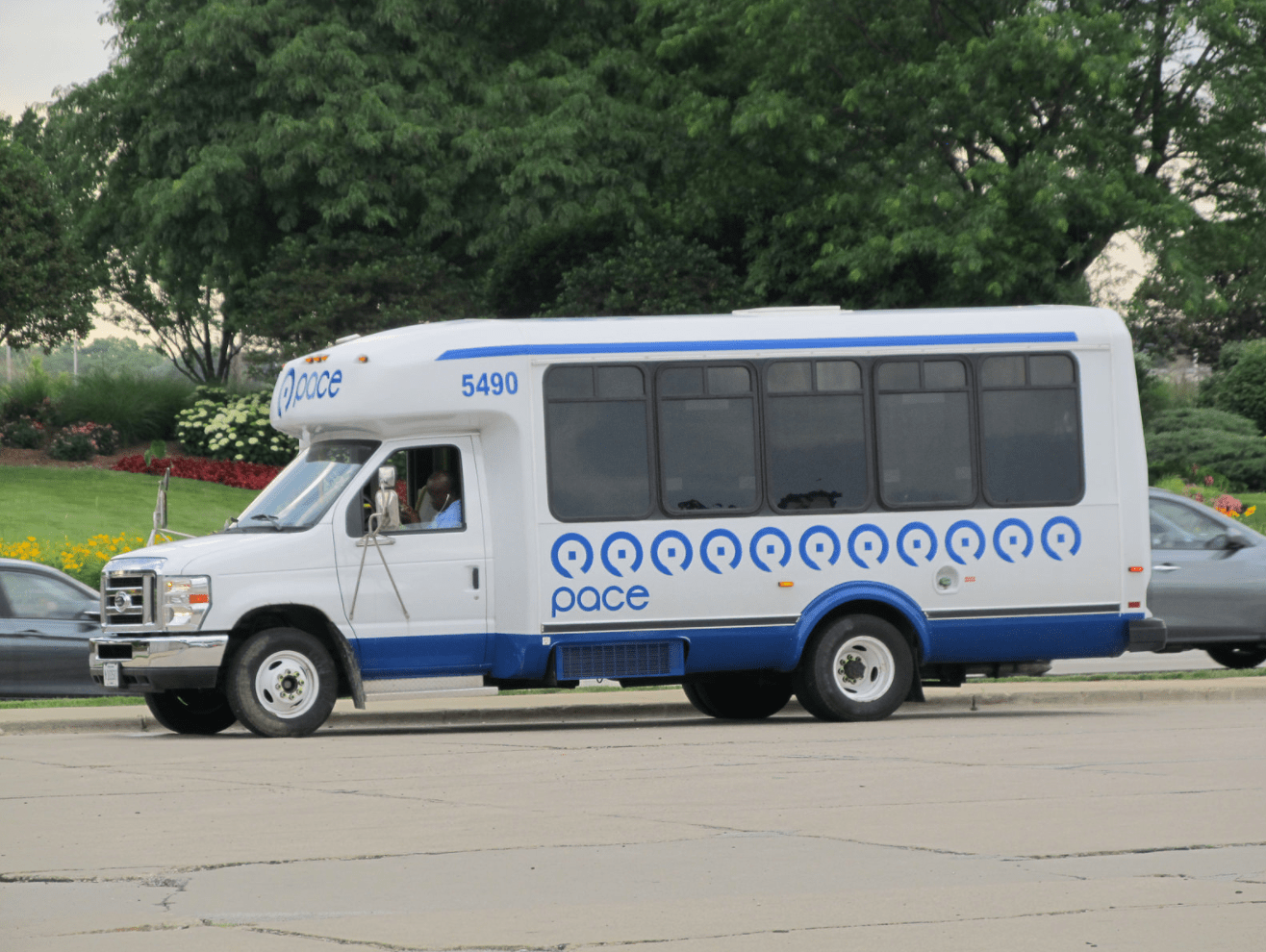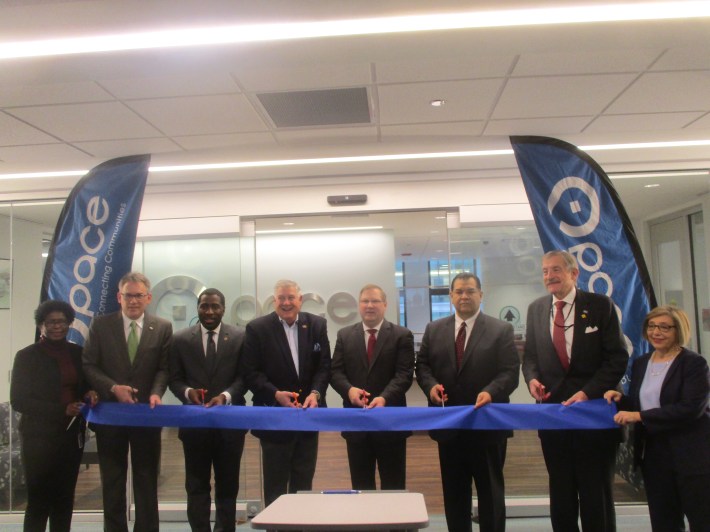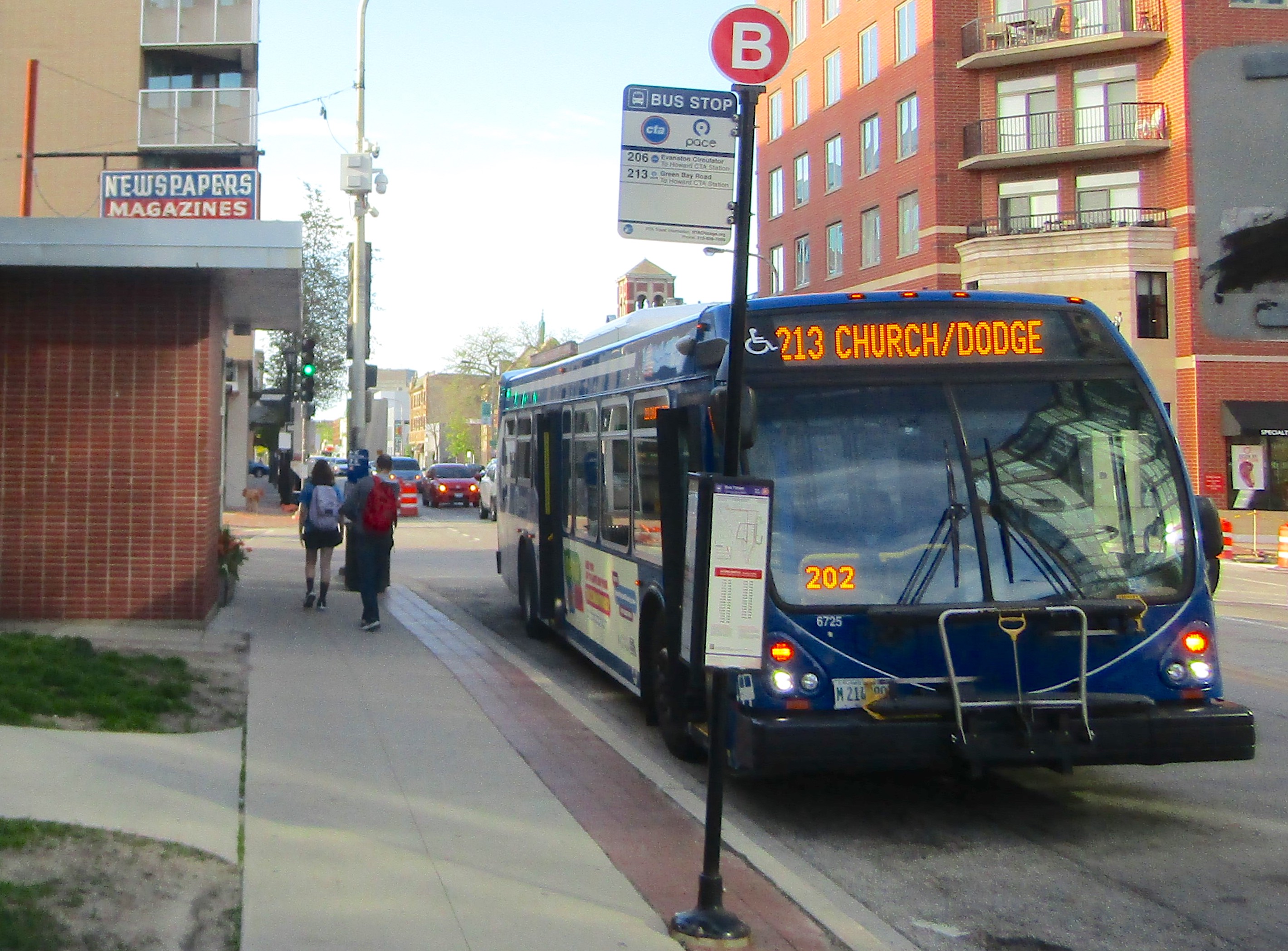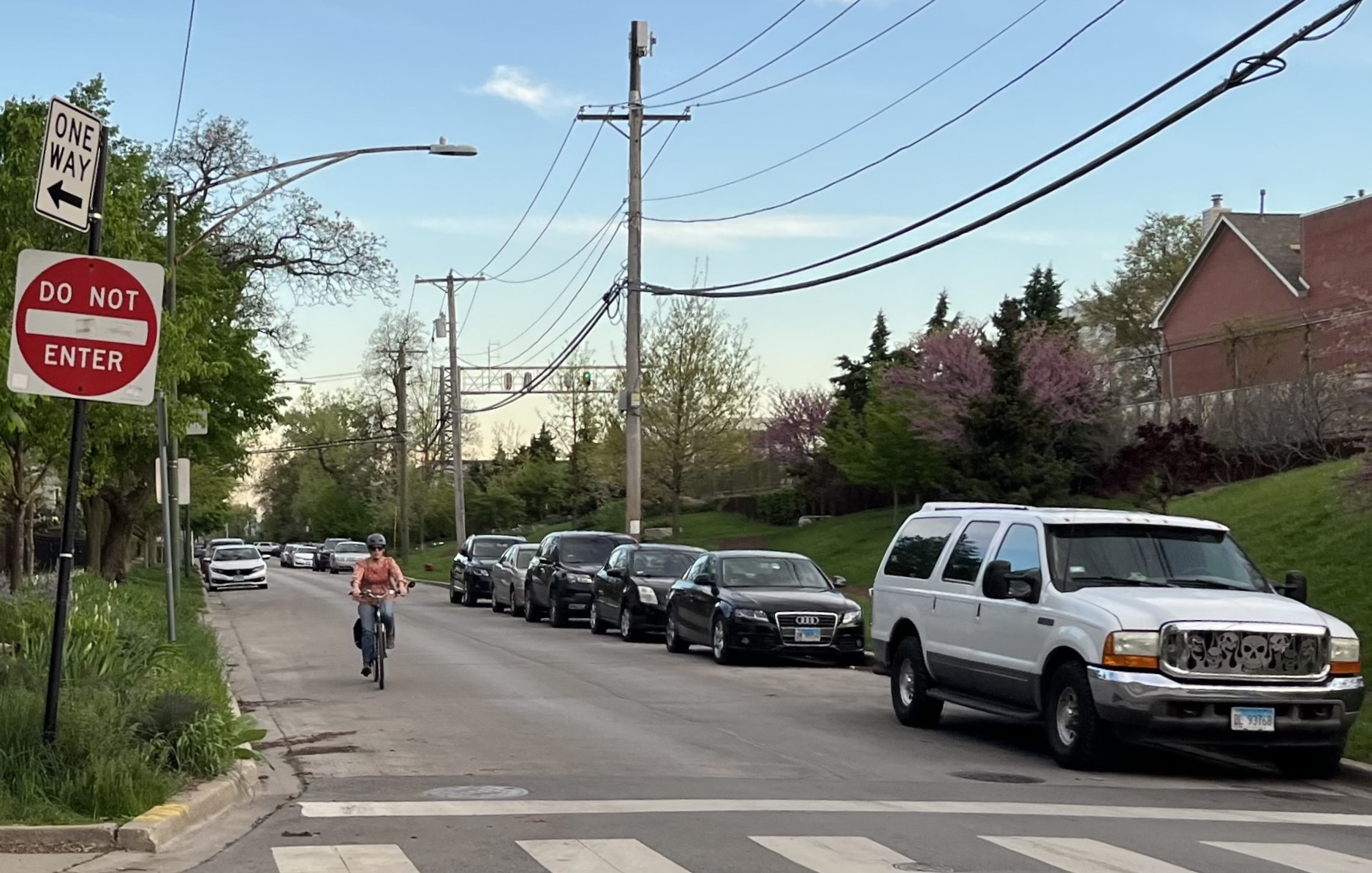Pace Opens New Downtown Paratransit HQ Amidst Ridership Growth as Illinois Ages
6:16 PM CST on December 11, 2018

A Pace paratransit bus. Photo: Jeff Zoline
For the past 30 years Pace has provided paratransit bus services in the Chicago suburbs, and 12 years ago the agency started serving Chicagoans as well. On Dec 3, Pace invited state elected officials and transit officials to the official opening of its new praratransit headquarters.
The new offices are located in the eighth floor of Metra’s headquarters, at 574 West Jackson. As Pace officials explained, Metra wasn’t using that space, and Pace got a good deal on the rent. Besides, given the fact that, according to Pace, 75 percent of paratransit service users live in Chicago, it made sense to locate the offices in the city.
Pace used the grand opening as an opportunity to promote its paratransit services’ new features. Riders can now book their rides online, and both riders and Pace can track paratransit vehicles in real time. But the transit agency still has a wish list of improvements for people with disabilities it wants to do if Illinois passes a capital bill – something that state senator Martin Sandoval (D-11th), who chairs the Illinois Senate’s transportation committee, told me will be a major priority during next year’s legislative session.
Unlike regular fixed-route buses, the smaller paratransit buses can pick up and drop off riders door-to-door, which makes them a better option for riders with mobility issues. The Chicago Transit Authority provided a similar service within the city limits until 2006, when Pace took it over. Pace spokesperson Maggie Daly Skoggbakken told me that this was done to create a unified, region-wide paratransit service.
Pace paratransit serves locations within 0.75 miles of 'L' stations and CTA and Pace bus routes. As a paratransit service map included in the Pace’s 2019 budget document shows, this does mean that, while the service does cover the majority of Cook County, the service gaps get larger the farther one gets from the city. But that doesn’t mean riders in further-flung areas don’t get any paratransit service at all. County-based dial-a-ride services are available to seniors and people with disabilities. But it should be noted that, while paratransit fares are $3.00 a trip, county-operated dial-a-ride services tend to charge more. For example, Kane County’s Ride in Kane service charges $4 for the first 10 miles and $1.50 for each mile beyond that.
In order to use Pace’s paratransit service, riders need to apply with the RTA to get a paratransit certification. Riders need to show that they either can’t use regular buses and trains at all, or they can’t use them under some circumstances.
According to Pace’s 2019 budget, in 2017, 4,256,000 paratransit trips were taken. And while the budget projects that fixed route service will decline somewhat, paratransit ridership is projected to go up by about 1.1 percent a year over the next three years.
Daly Skoggbakken said that Pace paratransit services started moving into the Metra building a few months ago, and it has been fully operational for a few weeks. The transit agency decided to have the grand opening on Dec. 3 to coincide with the United Nations' International Day of Persons With Disabilities.
Pace Chairman Richard Kwasneski said that, with the changes in technology, the new facility was very much needed. “As times changed, so must we, so we have a lot of technology improvements.”
Sandoval said that he appreciated the work that went into new facilities. “Our paratransit workers deserve the best facility and the best tools,” he said.
RTA chairman Kirk Dillard described the new offices as inter-agency collaboration “at its finest.” He emphasized that the program was important – something that, he hoped, would get more attention from the state under the new governor. “As Illinois ages, as we change, the need for ADA paratransit program is growing,” he said.
State Representative Marcus Evans (D-33rd), who chairs Illinois House of Representatives' transportation committee, shared similar sentiments. “Someone once said that government reflects our community values,” he said. “This space reflects that we care about the people that come through the door and the people that we serve.”

After the ribbon cutting, the elected officials and other guests got the tour of the new offices. It highlighted Pace's ability to track paratransit vehicles in real time and record where the vehicle has been. Guests got to see the emergency management “command center” -- which included real-time information on the paratransit vehicles and TVs tuned into the Weather Channel -- and the training room for Pace employees and drivers.
While paratransit riders have traditionally booked trips over the phone, Pace has been rolling out an online booking system and a booking smartphone app. Melinda Metzger, Pace's deputy executive director of operations, told the guests that most of the paratransit riders still prefer calling, but Pace thinks this will change over time as more people who are currently comfortable with digital communications age.
Officials also spotlighted the Taxi Access Program, which allows paratransit-eligible riders to pay $3 a trip for a taxi ride for trips that would normally cost $23 or less. If the meter goes over $23, riders have to pay the additional charge out of their own pockets.
Metzger said the taxi program sees about 5,000 riders a month. She added that the program has the advantage of being less expensive for Pace than paratransit buses while also giving the agency and the riders more flexibility. And she noted that, with ride-share services liek Uber and Lyft eating up much of their traditional business, taxi companies are happy to take part in TAP.
Asked whether Pace was interested in bringing ride-share companies into TAP as well, the staffers said that could raise legal issues. “Generally, because we accept federal funds, we have certain reporting and employee background check requirements that [Transportation Network Companies] like Uber may not comply with,” Daly Skogsbakken said.
During the tour, Sandoval wondered whether Pace could do more upgrades – leading one of the Pace employees to, half-jokingly, say that this is where a new state infrastructure bill would come in handy. Daly Skogsbakken said that Pace does, in fact, have a wishlist for what it would do with state capital funding.
“The RTA Invest in Transit Regional Strategic Plan mentions new call center software and restructuring to reduce costs and improve response times, [as well as] vehicle purchase and garage construction for city of Chicago service to reduce operating costs,” she said.
According to the plan, Pace would need $75 million to replace the existing paratransit vehicles, $13 million to buy new vehicles necessary to expand service. Other upgrades Daly Skoggbacken mentioned would cost a total of $193 million.
Sandoval told me that a capital program would be a major priority at the next year’s legislative session. “We look forward to going back to Springfield and working with Governor Pritzker and putting together one of them most robust infrastructure programs in America – which is long overdue,” he said. “We’re going to get it done, with Governor Pritzker leading the way.”
![]()
Did you appreciate this post? Consider making a donation through our PublicGood site.
Read More:
Stay in touch
Sign up for our free newsletter
More from Streetsblog Chicago
Since COVID, Pace ridership has fared better on major corridors and in north, northwest suburbs than in south, west ‘burbs
The suburban bus system's top five busiest routes largely maintained their ridership rankings.
Due to incredible support from readers like you, we’ve surpassed our 2023-24 fundraising goal
Once again, the generosity of walk/bike/transit boosters is fueling our reporting and advocacy.
Which Metra corridor would become more bike-friendly and greener under a new plan? Ravenswood!
Thanks to plans to convert little-used parking spaces, the avenue is slated to get a new bike lane, and the Winnslie Parkway path and garden will be extended south.



